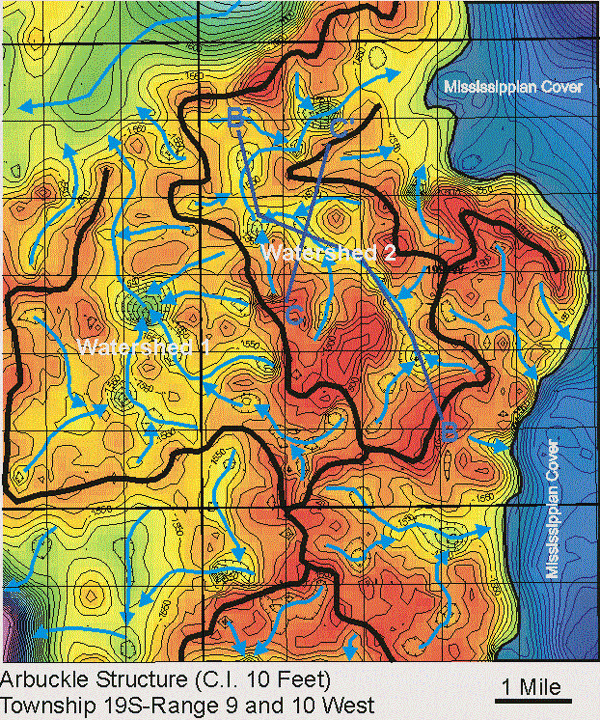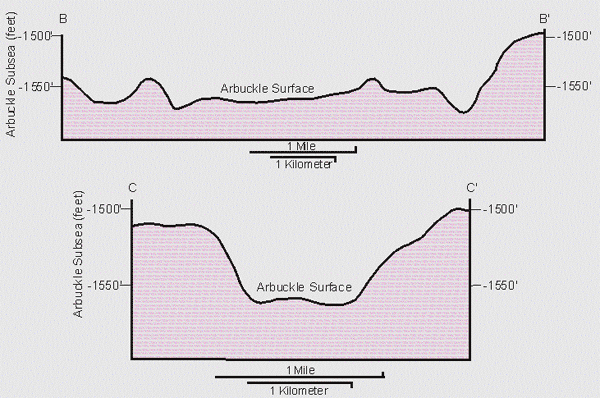
Kansas Geological Survey
Open-file Report 2001-55

|
|
Kansas Geological Survey Open-file Report 2001-55 |
In this area on the Arbuckle erosional surface, valleys formed primarily by sapping with secondary run-off and mass wasting processes. Watershed 1 drains to the north and connects with the larger system. As the underground drainage system evolves and enlarges, surface drainage is disrupted, and low-order tributary streams are pirated into the subsurface. This is very evident in Watershed 1 as expressed in the paucity of downstream tributaries beyond the large doline in section 24 (Township 19S-10W).
Watershed 2 exhibits a sapped valley in a mature stage, as evidenced in the lightbulb-shaped valley migration in the southeast corner of the watershed. As the valley back-sapped the positive features it loses area of ground-water recharge. At the mature stage sapping will decrease and increase the relative influence of surface runoff and mass-wasting as local topography is degraded. There are basins from which the only exit of runoff is by underground routes. In such basins, all sediment load derived from erosion and slope retreat must be carried through this underground drainage system. It is inferred that sediment blockage is one of the factors that inhibits development of competent underground channels, forcing flood flows to remain in their surface channels, thus maintaing the fluvial pattern.


|
| Profiles B-B' and C-C' (location shown to the left). Notice the steep headwall, relatively flat floor, and characteristic U-shape of the Arbuckle valley. |
|
|
e-mail : webadmin@kgs.ku.edu
Last updated January 2002
http://www.kgs.ku.edu/PRS/publication/OFR2001-55/P3-05.html